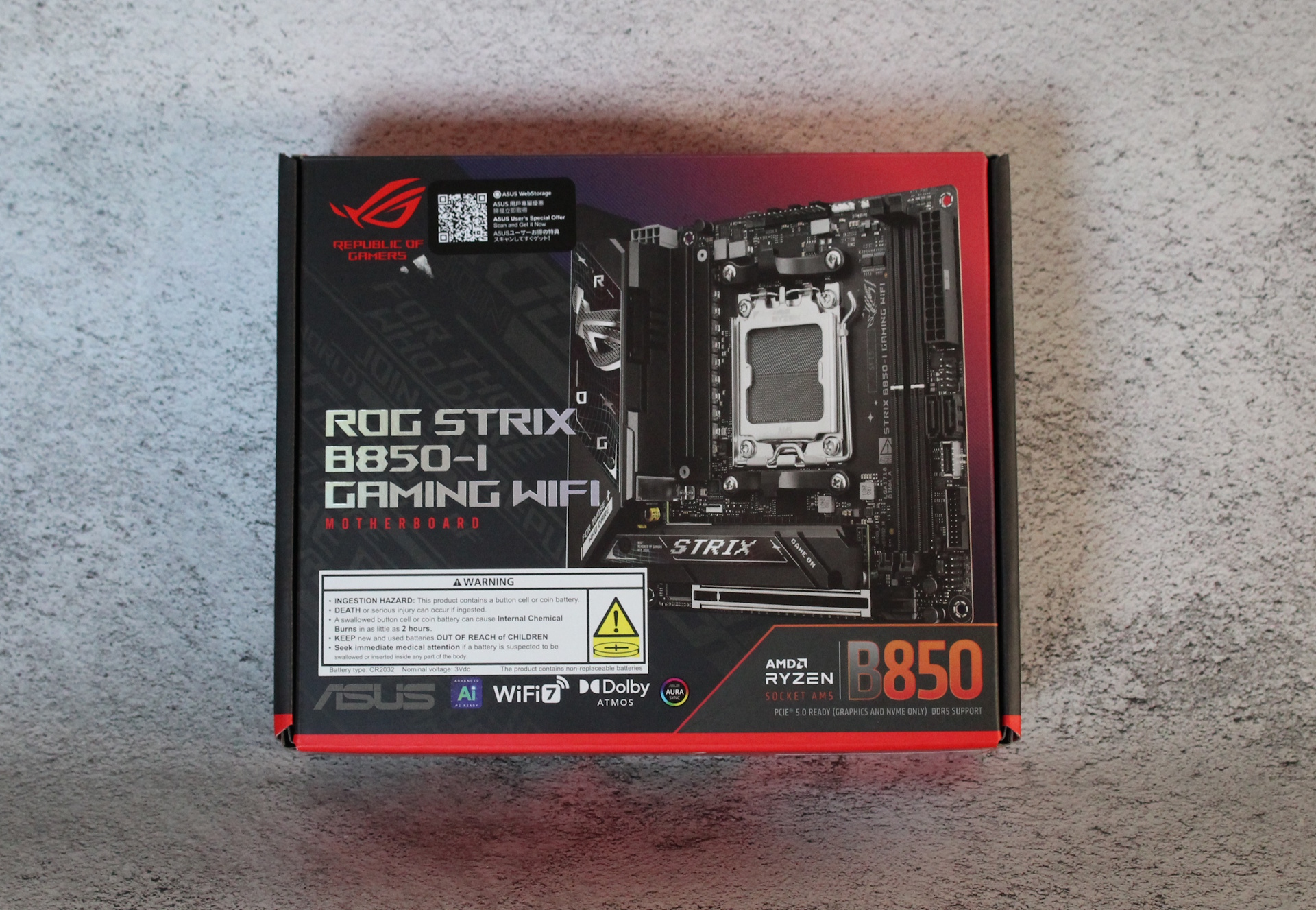Why you can trust Tom's Hardware
Benchmark Results
Our standard benchmarks and power tests are performed using the CPU’s stock frequencies (including any default boost/turbo) with all power-saving features enabled. We set optimized defaults in the BIOS and the memory by enabling the XMP profile. For this baseline testing, the Windows power scheme is set to Balanced (default) so the PC idles appropriately.
Synthetic Benchmarks
Synthetics provide a great way to determine how a board runs, as identical settings should produce similar performance results. Turbo boost wattage and advanced memory timings are areas where motherboard makers can still optimize for stability or performance, and these settings can impact some testing.
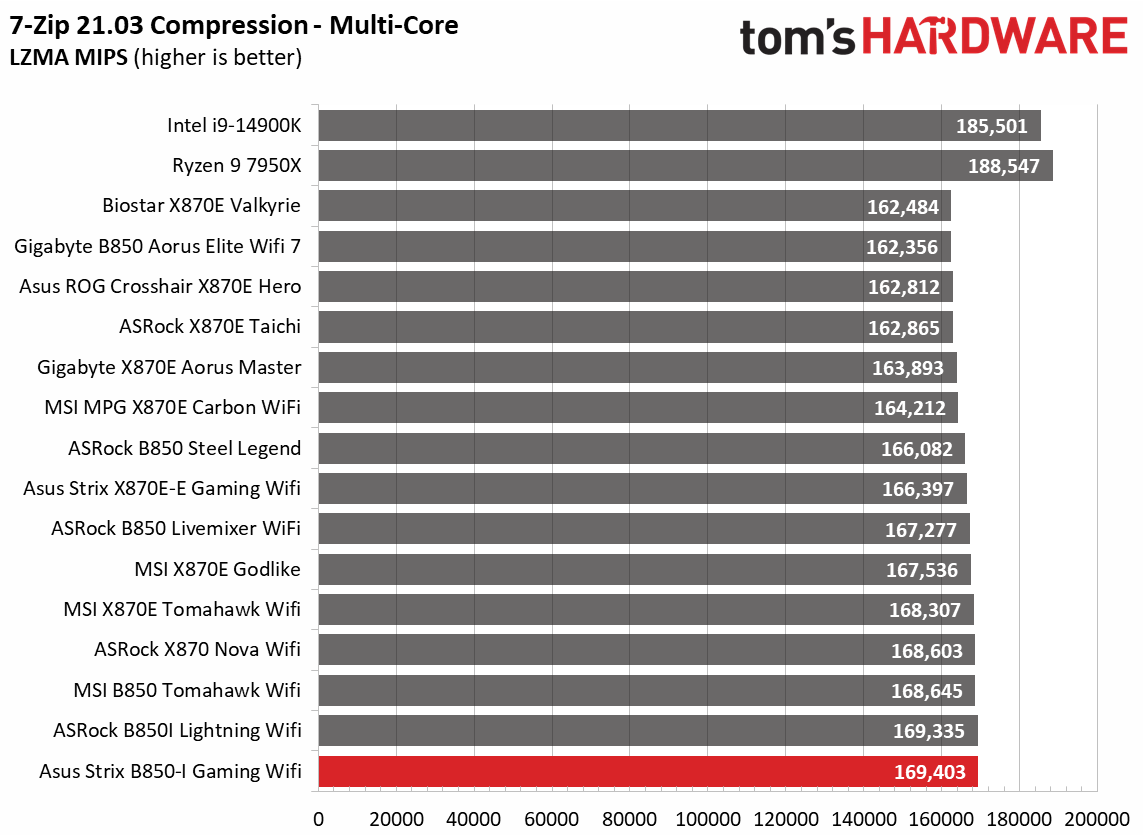
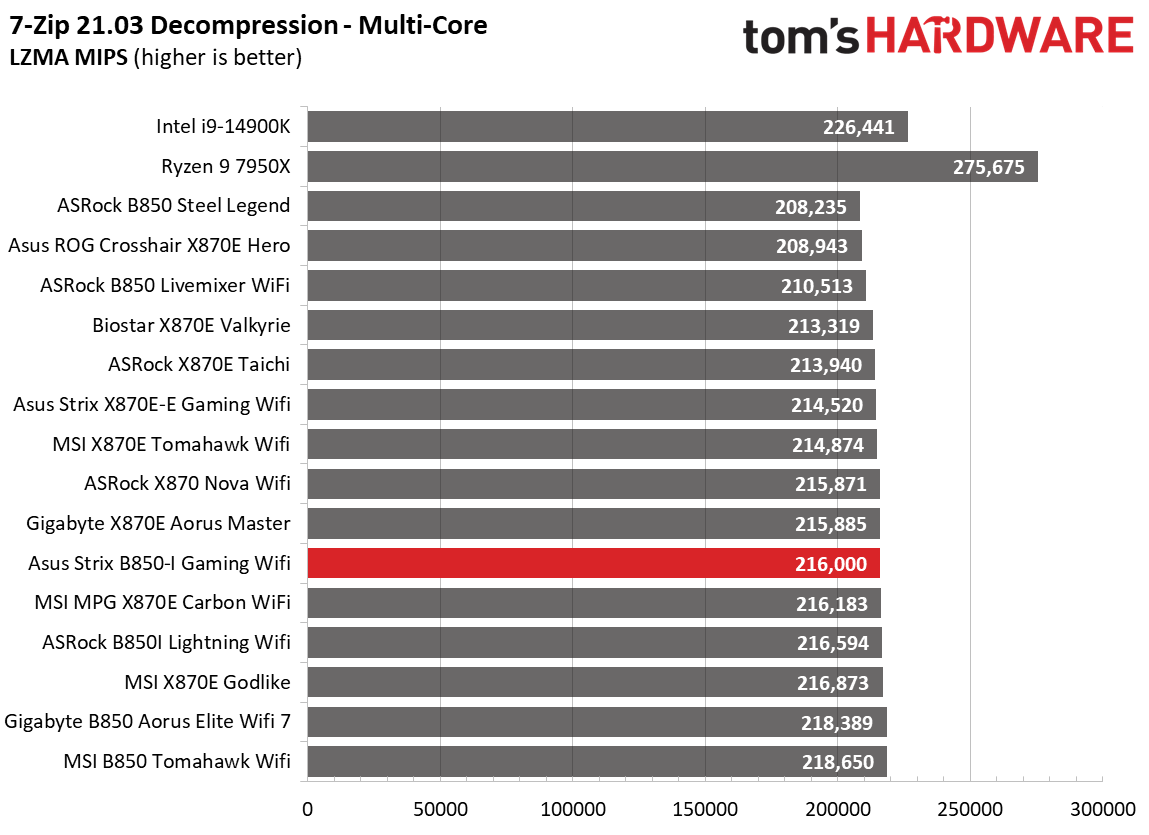
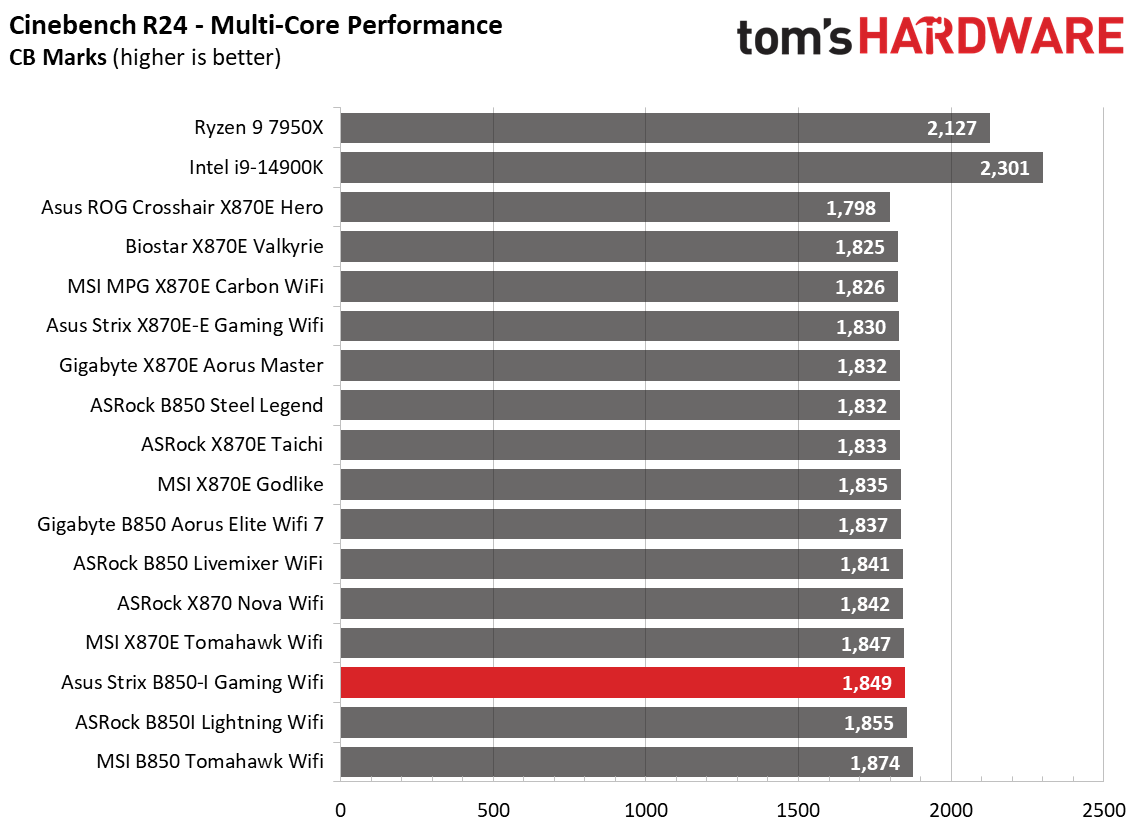
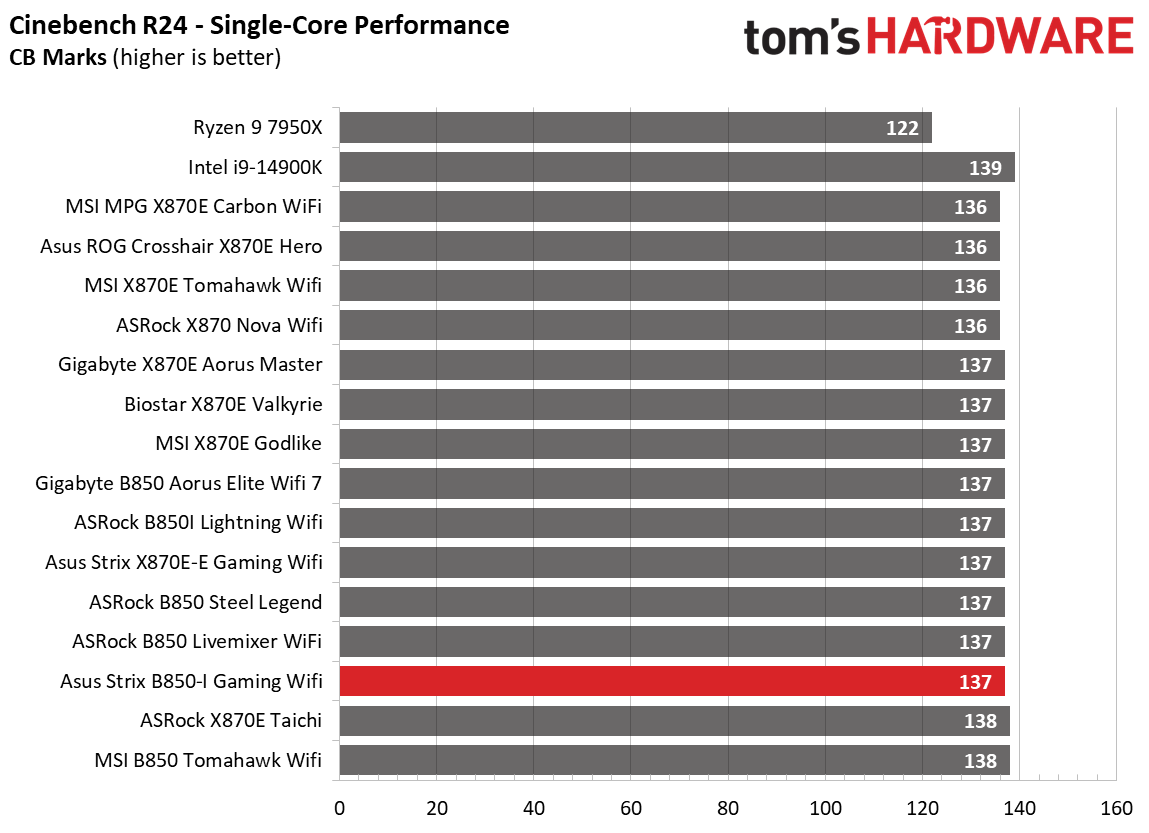
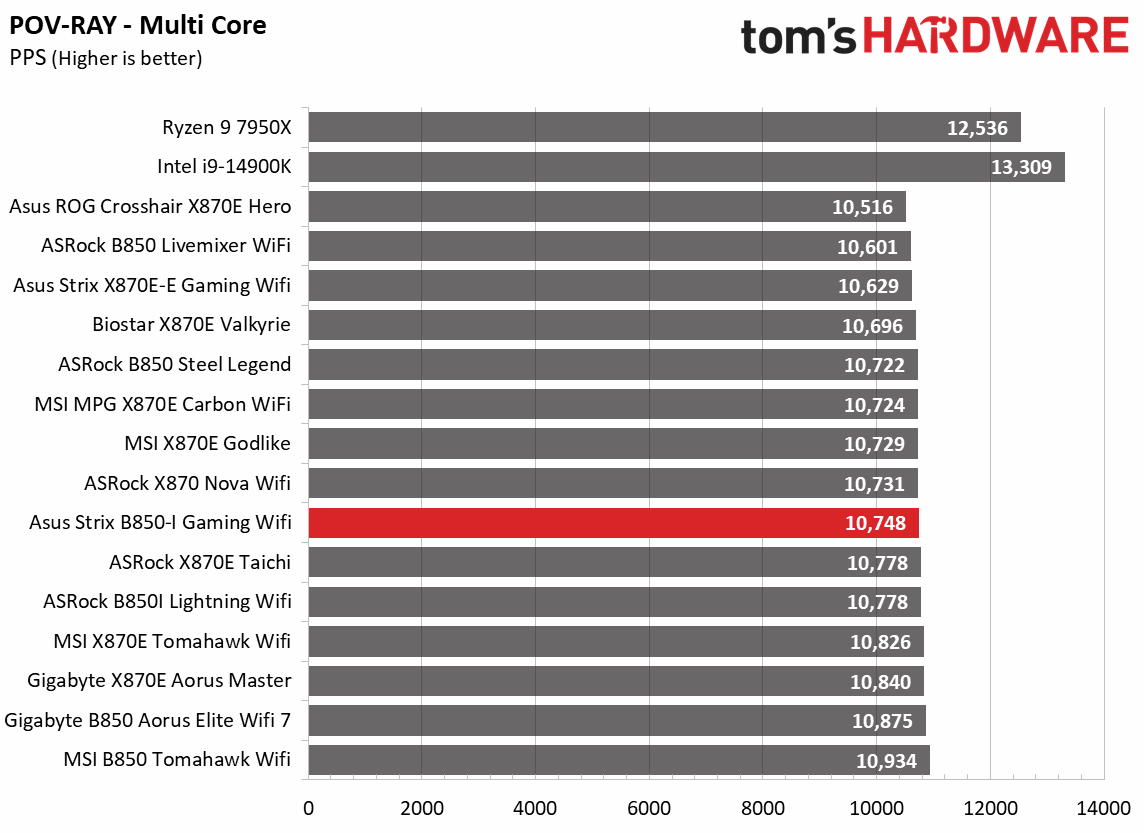
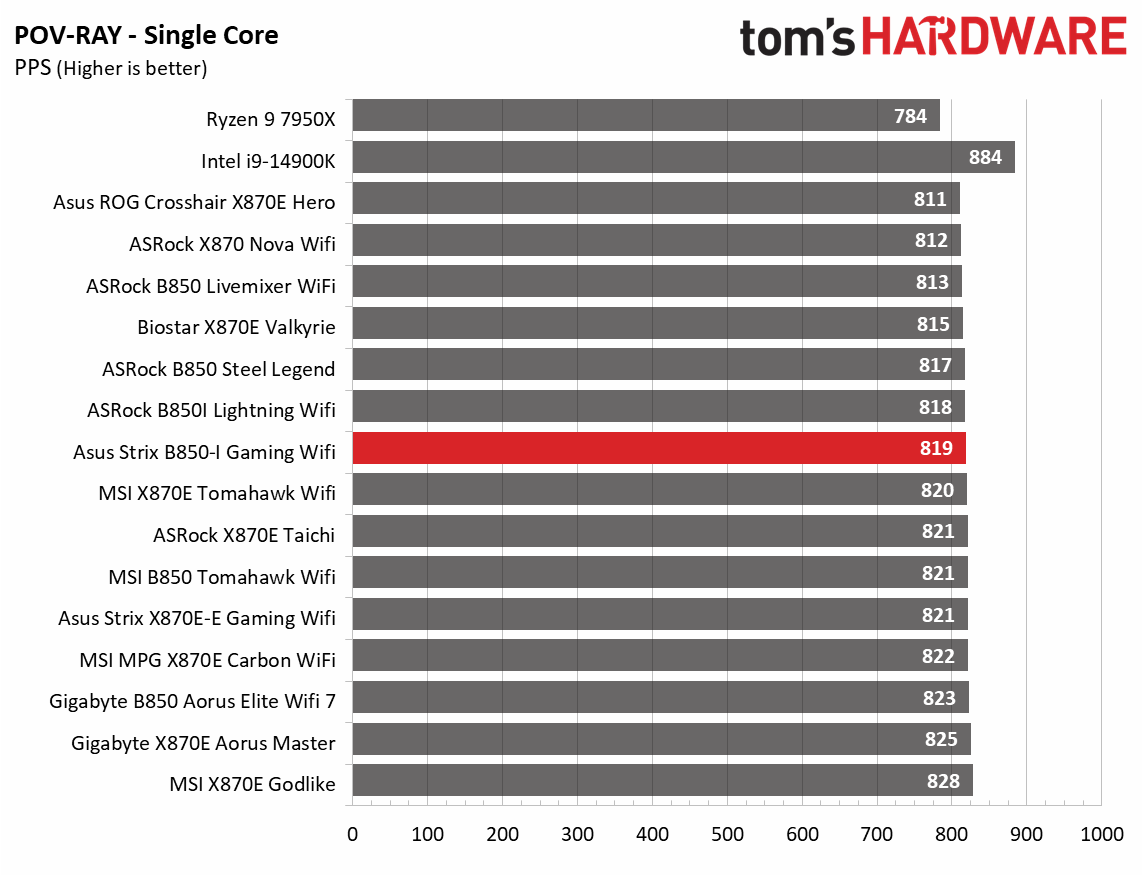
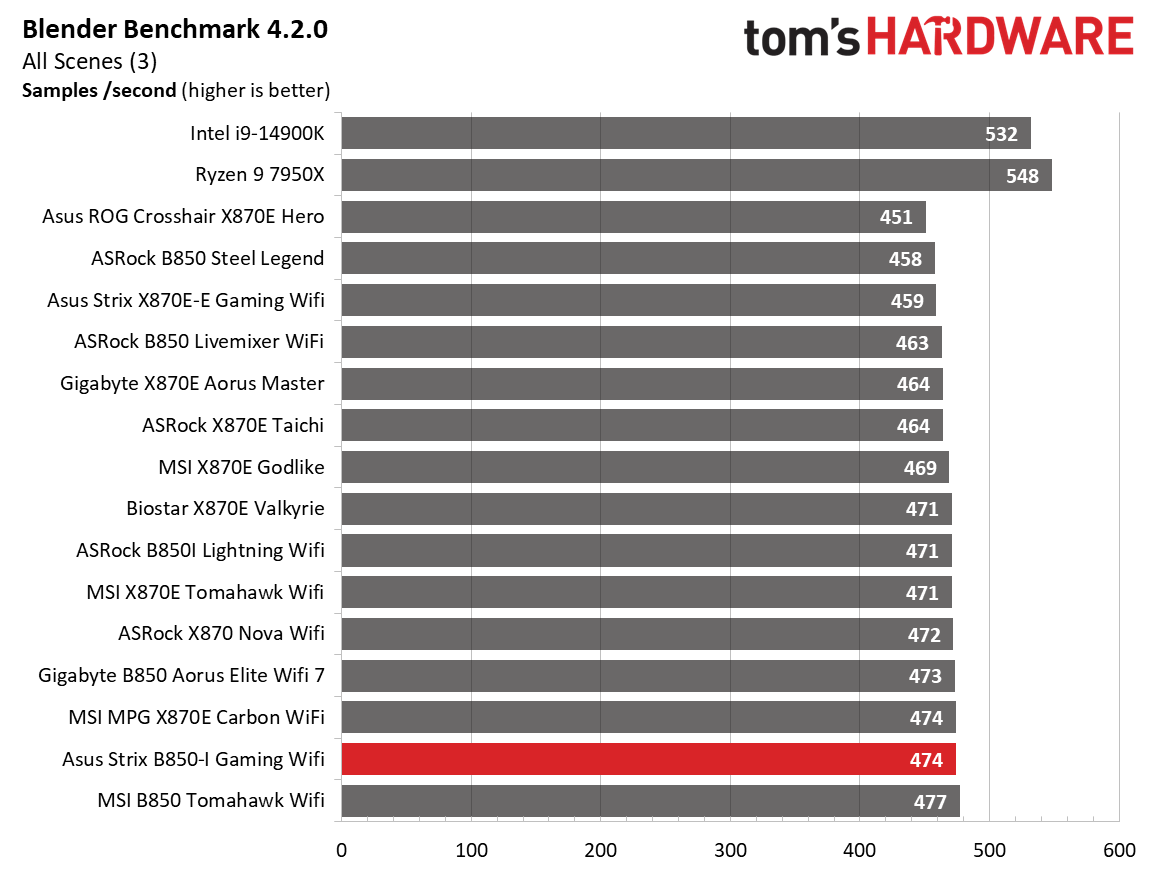
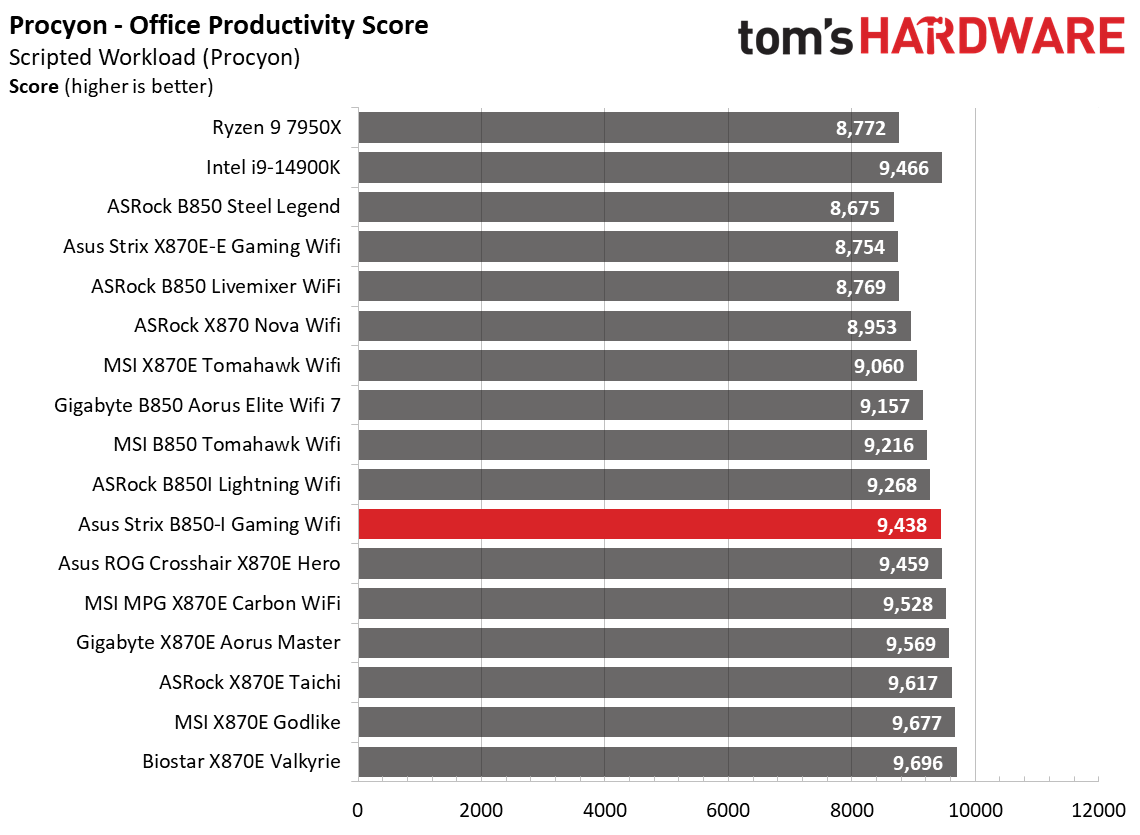
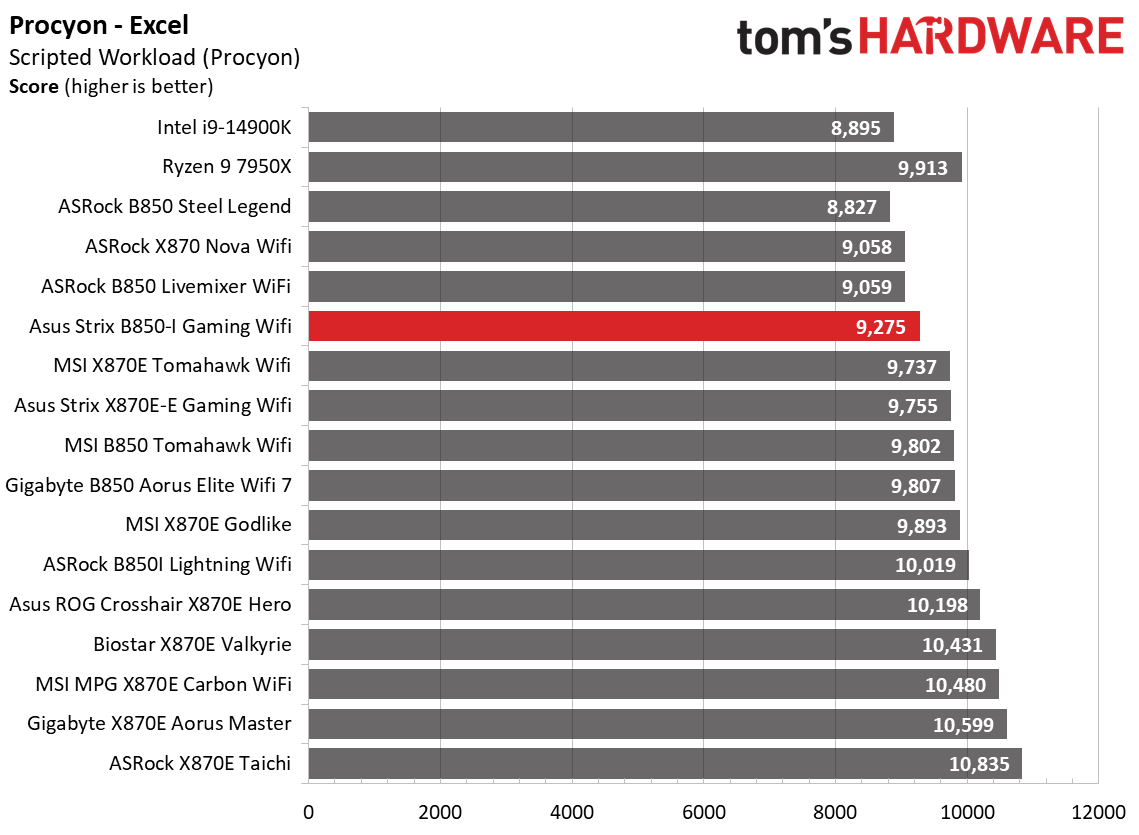
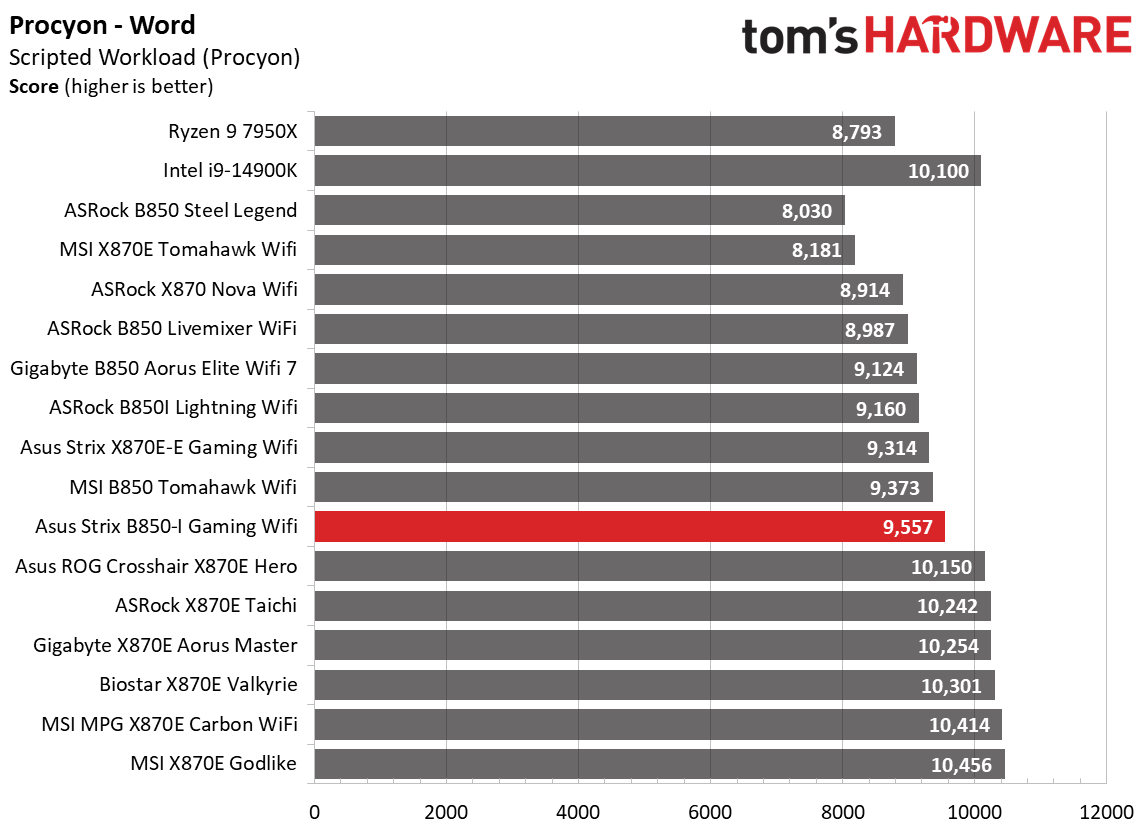
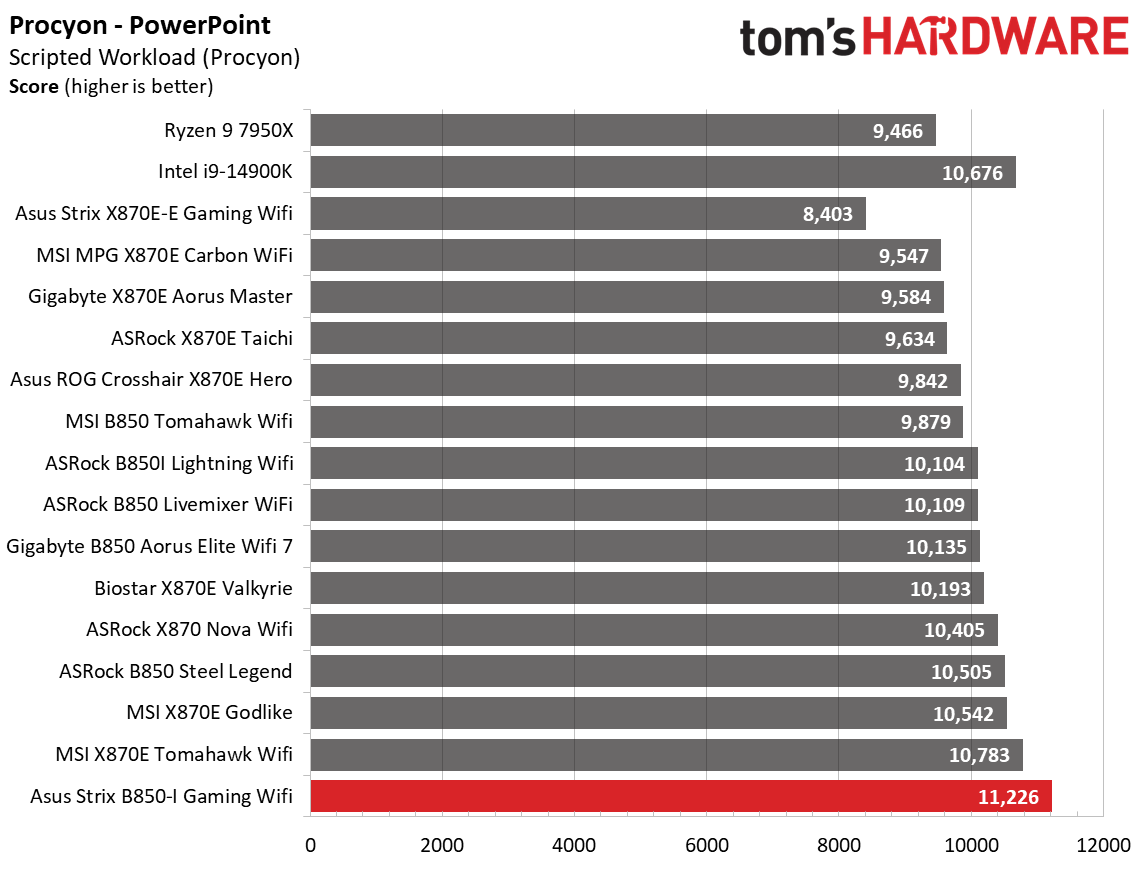
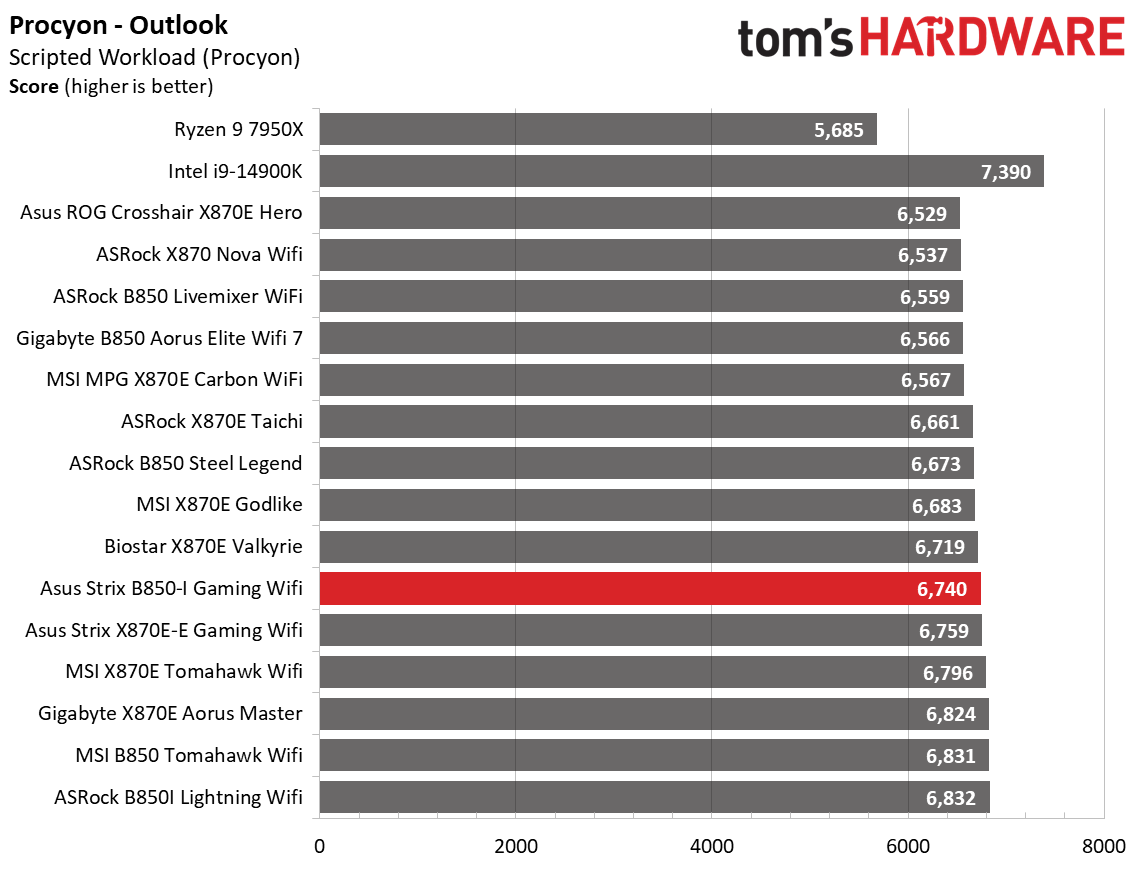
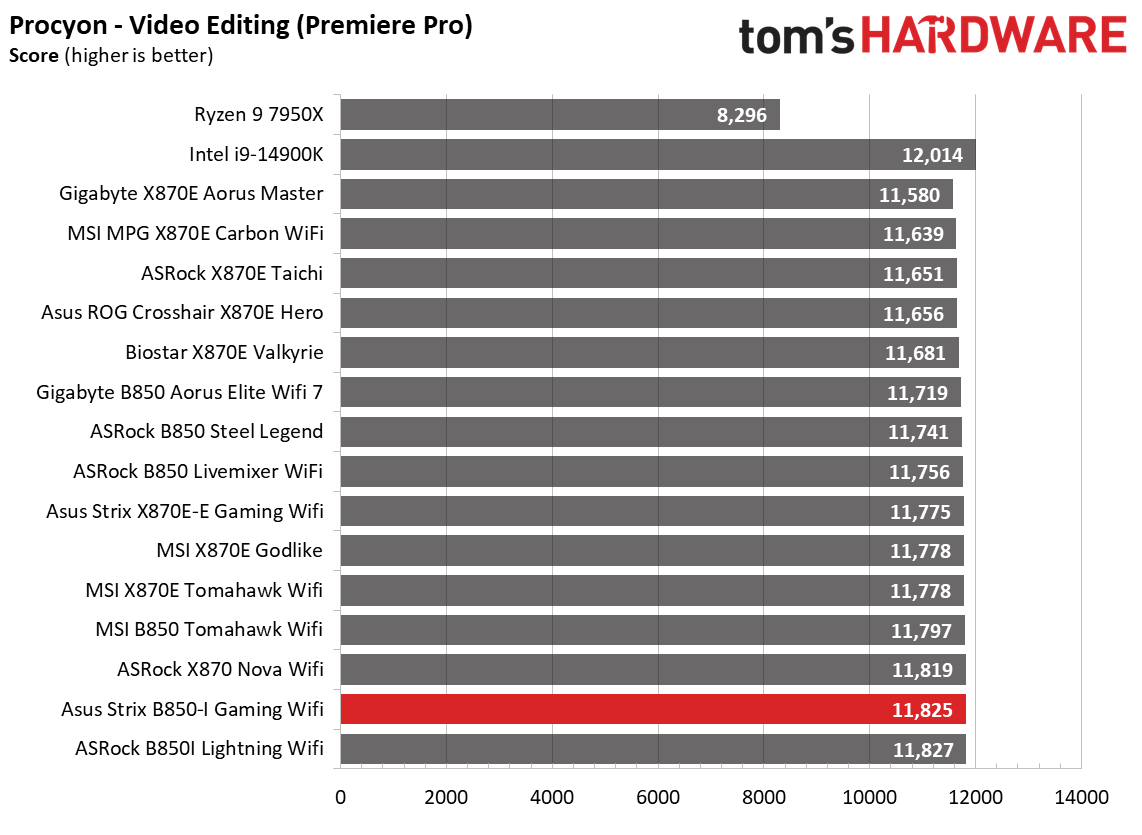
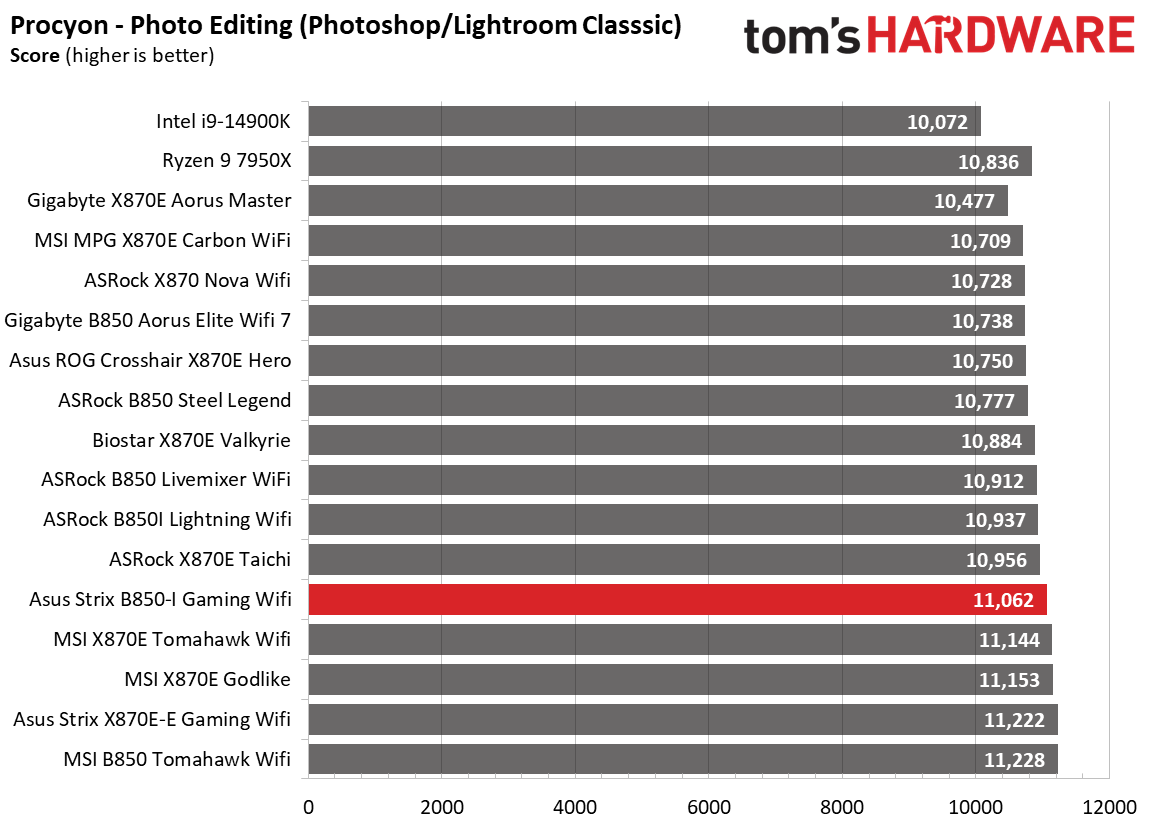
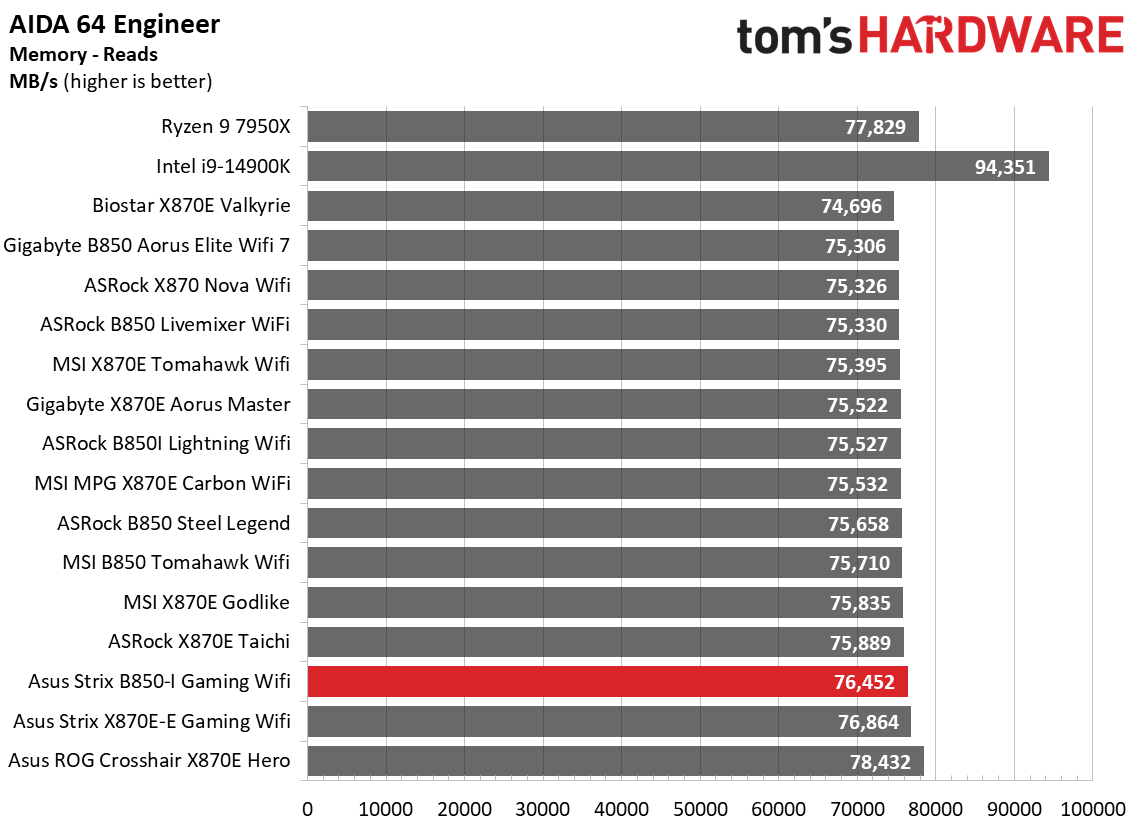
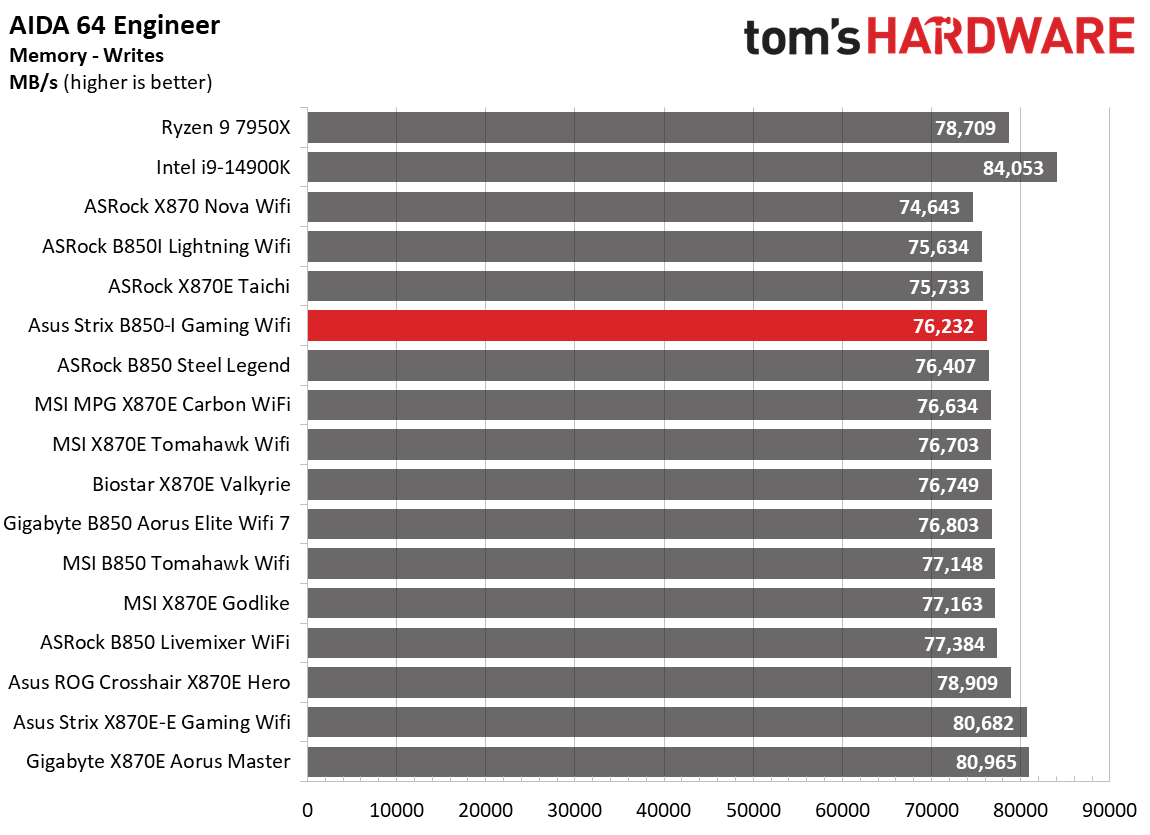
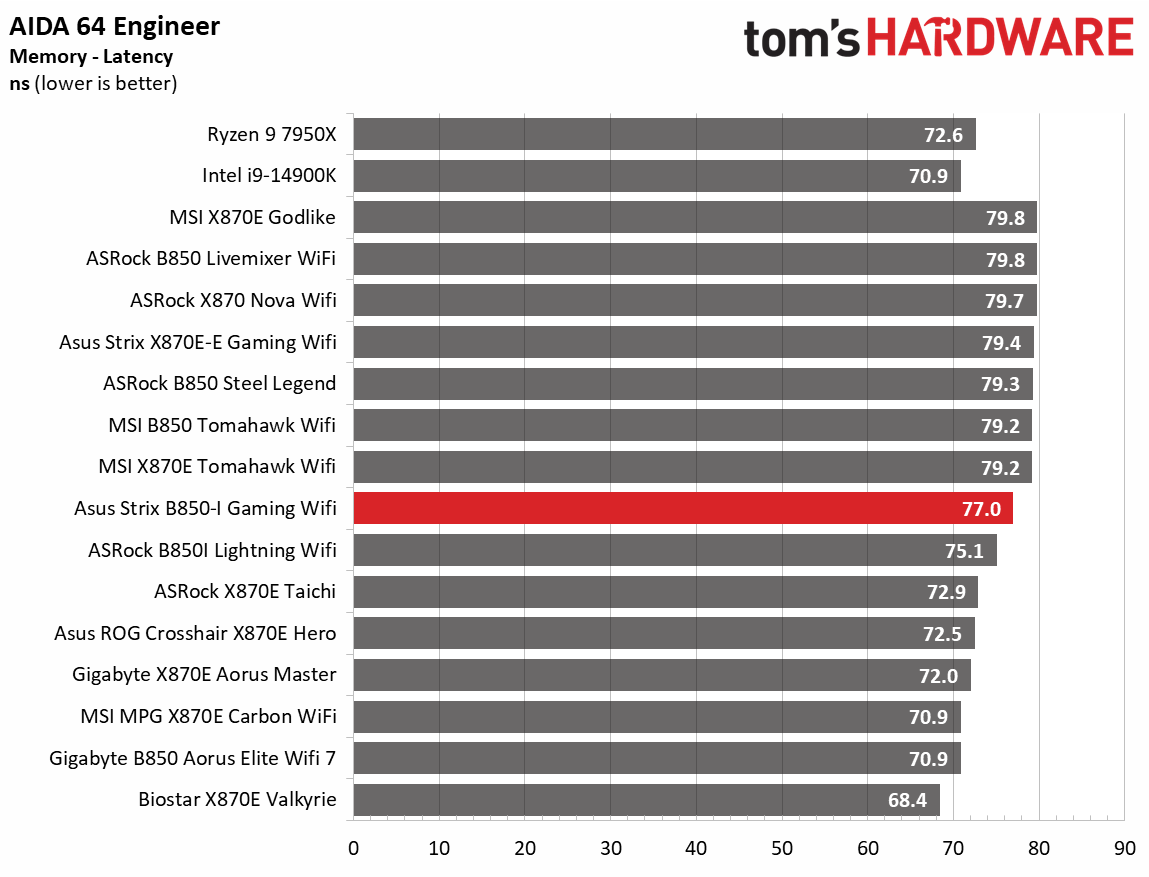
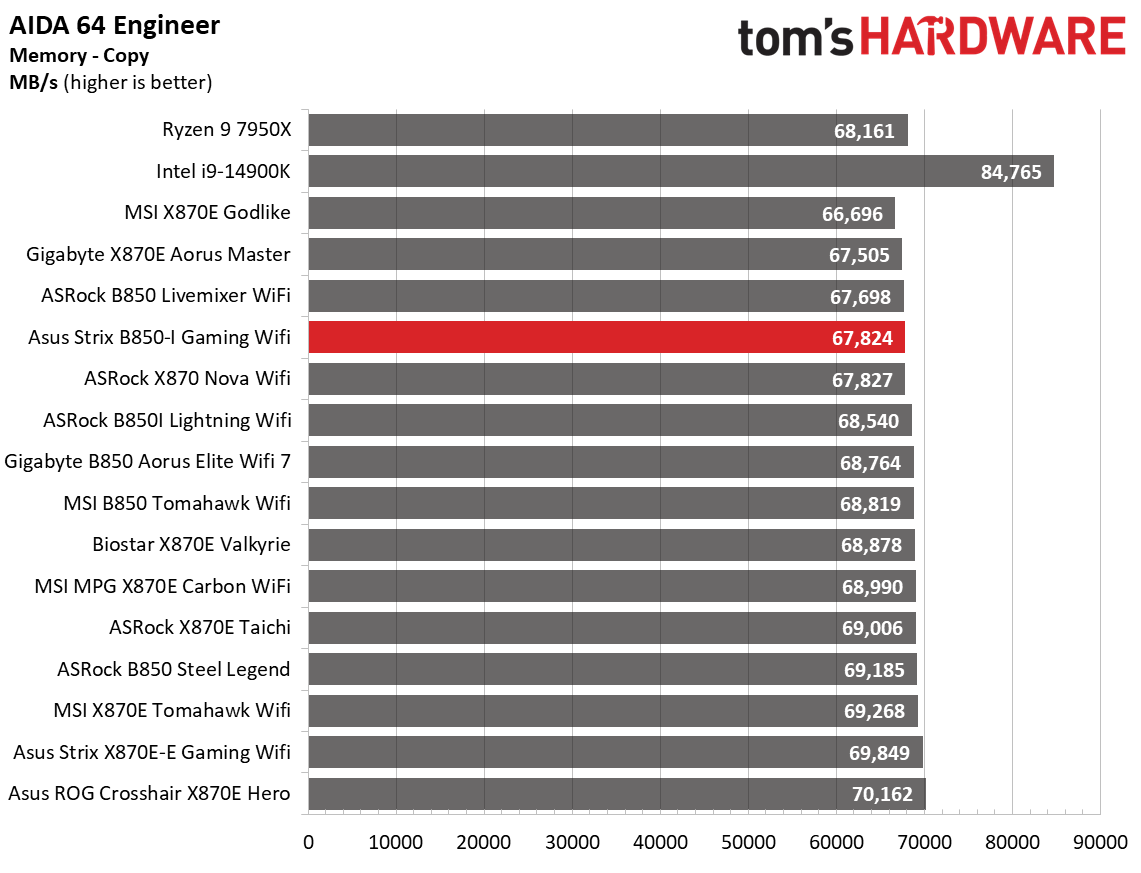
The ROG Strix B850i did well across our synthetic benchmarks, often running faster than the average. We saw nothing out of the ordinary here.
Timed Applications
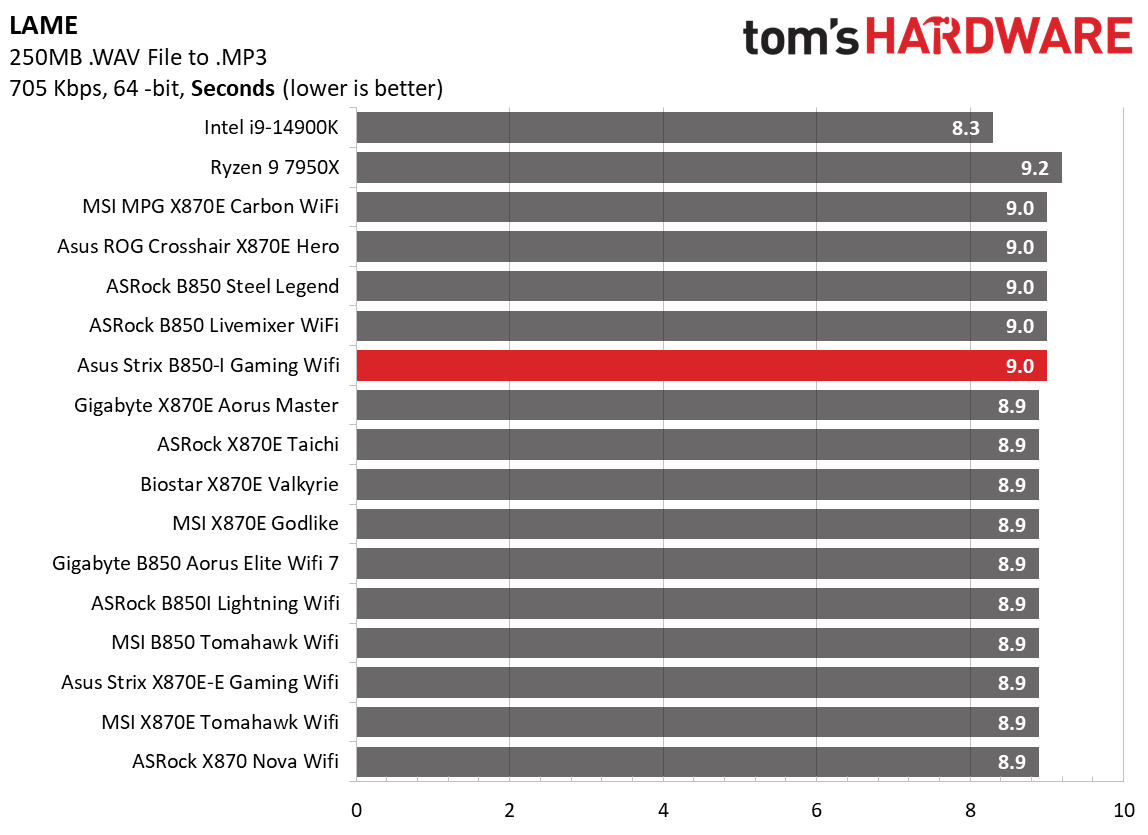
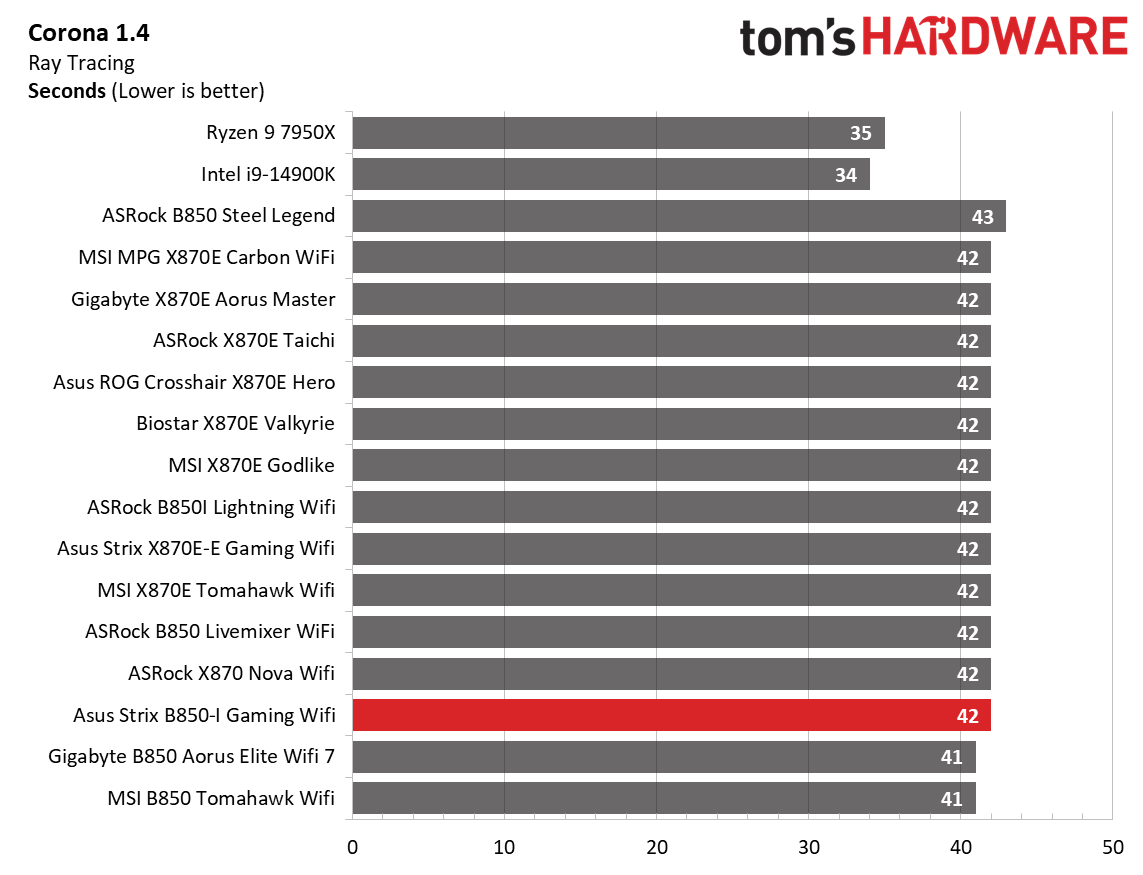
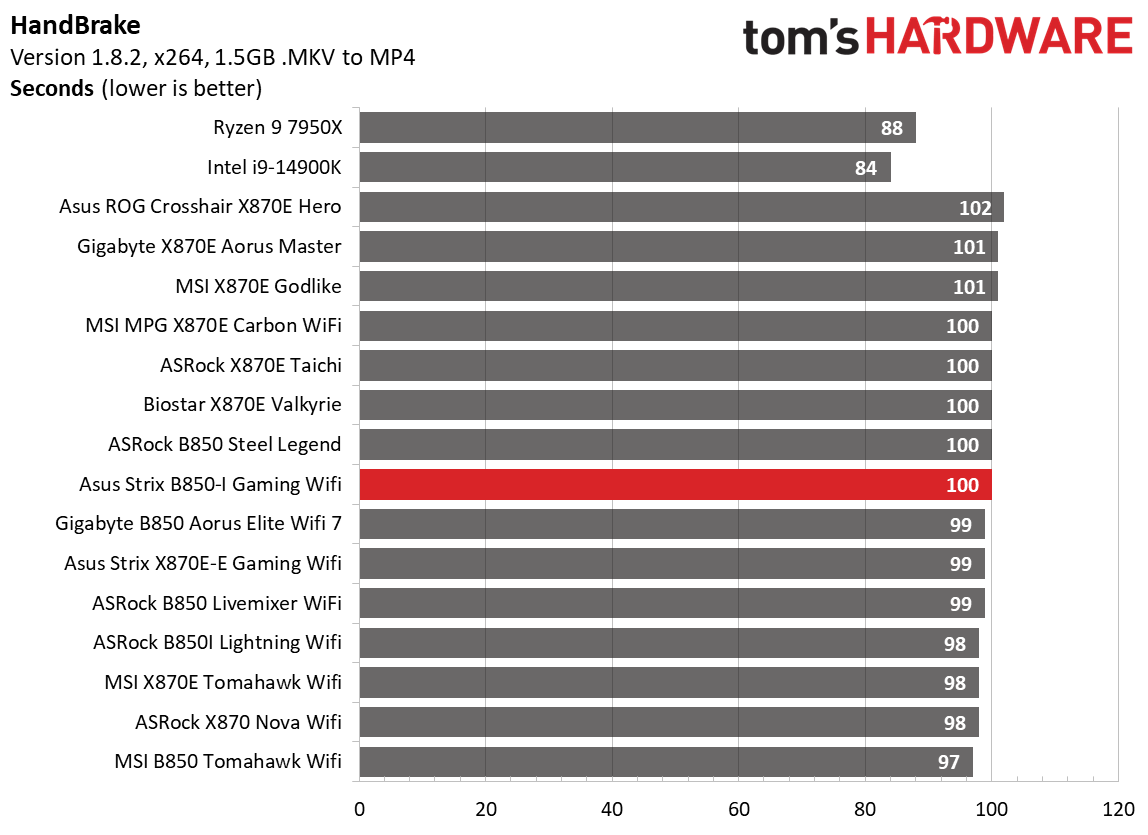
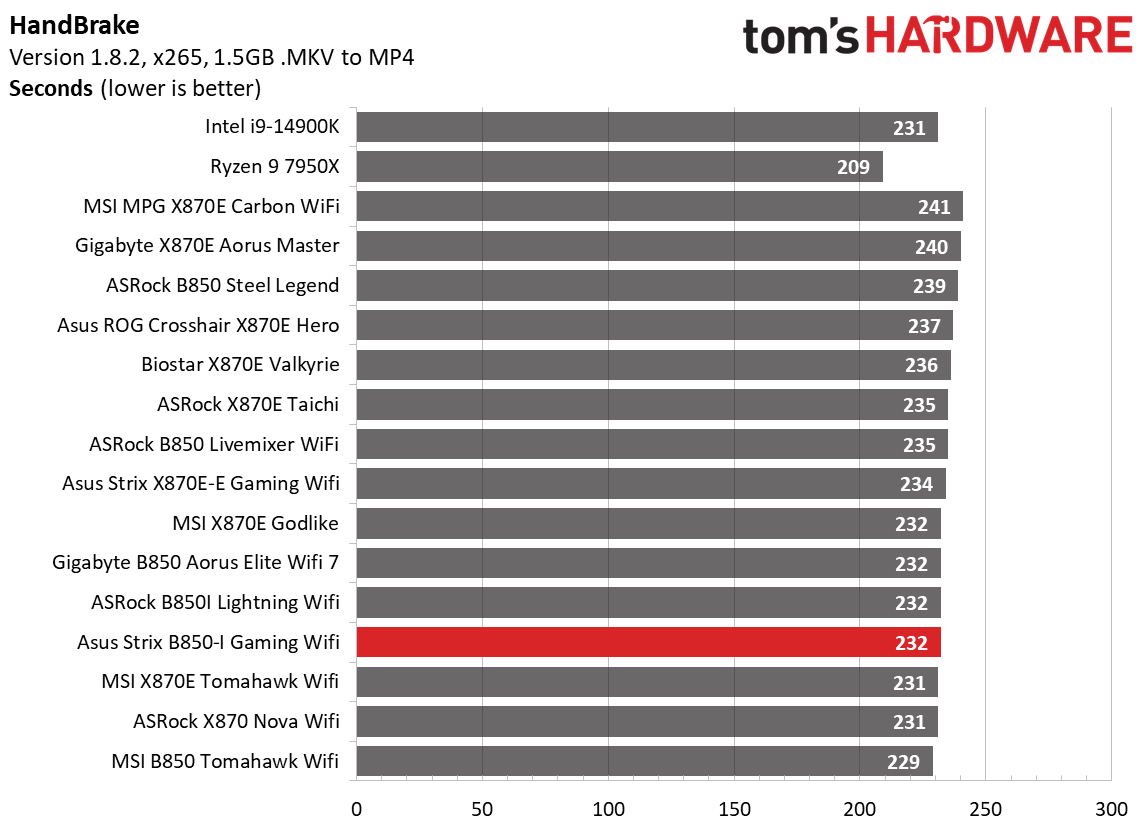
It was the same story for the timed application:.a lot of average to slightly above average results, depending on the test.
3D Games and 3DMark
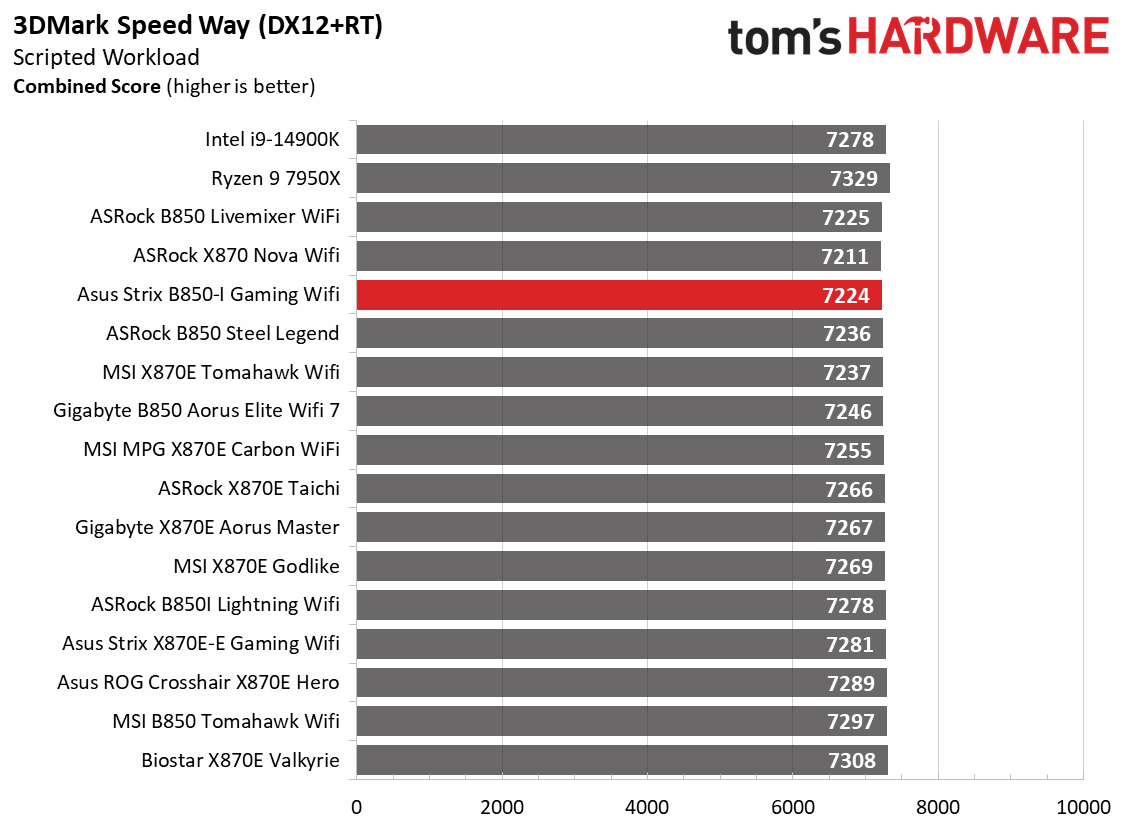
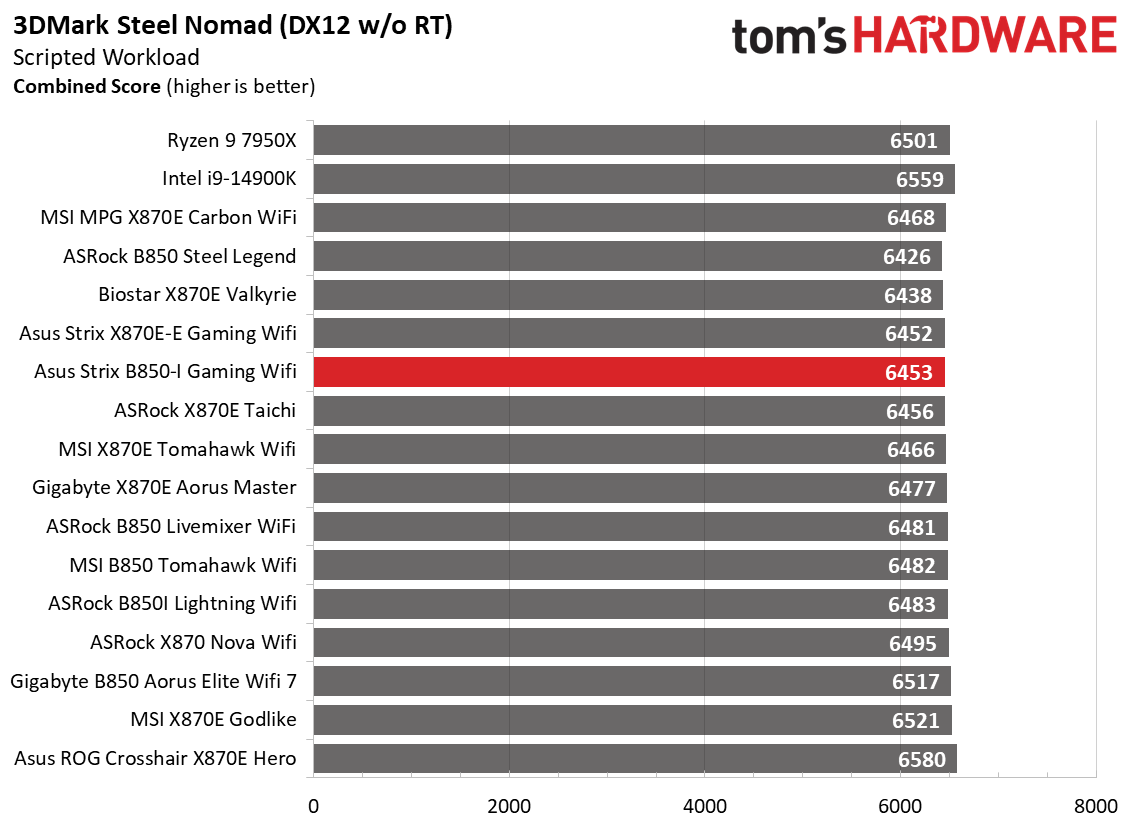
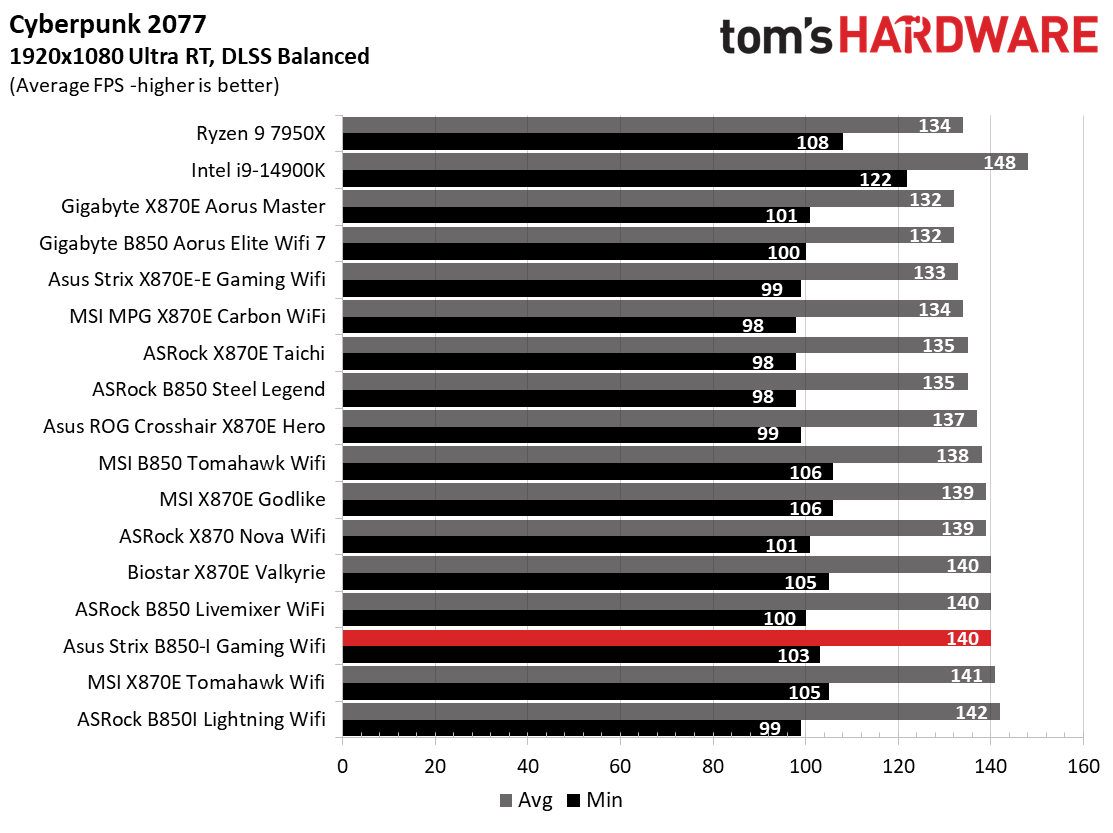
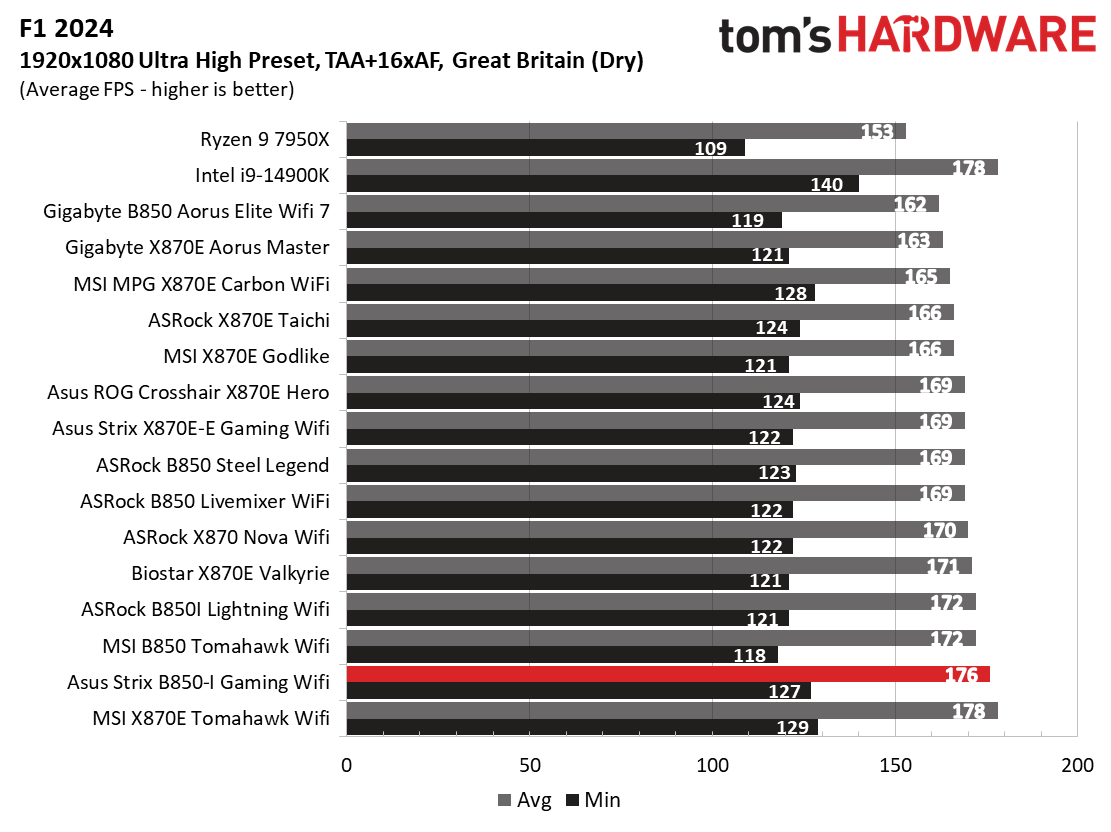
Starting with the launch of Zen 5, we’ve updated our game tests. We’re keeping the F1 racing game but have upgraded to F1 24. We also dropped Far Cry 6 in favor of a more popular and visually appealing game. We run both games at 1920x1080 resolution using the Ultra preset (details listed above). Cyberpunk 2077 uses DLSS, while we left F1 24 to native resolution scaling. The goal with these settings is to determine if there are differences in performance at the most commonly used (and CPU/system-bound) resolution with settings most people use or strive for (Ultra). We expect the difference between boards in these tests to be minor, with most falling within the margin of error. We’ve also added a minimum FPS value, which can affect your gameplay and immersion experience.
Our gaming tests confirm that the ROG Strix B850-I Gaming WiFi’s excellent performance, and not only for office and productivity tasks. While its 3DMark scores weren't outstanding, its true value was demonstrated in actual gameplay, which we consider more critical.
Overclocking
Over the past few CPU generations, overclocking headroom has been shrinking on both sides of the fence while the out-of-the-box potential has increased. For overclockers, this means there’s less fun to have. For the average consumer, you’re getting the most out of the processor without manual tweaking. Today’s motherboards are more robust than ever, and they easily support power-hungry flagship-class processors, so we know the hardware can handle them. There are multiple ways to extract even more performance from these processors: enabling a canned PBO setting, manually tweaking the PBO settings, or just going for an all-core overclock. Results will vary and depend on the cooling as well. In other words, your mileage may vary. Considering all of the above, we’re not overclocking the CPU. However, we will try out our different memory kits to ensure they meet the specifications.
Get Tom's Hardware's best news and in-depth reviews, straight to your inbox.
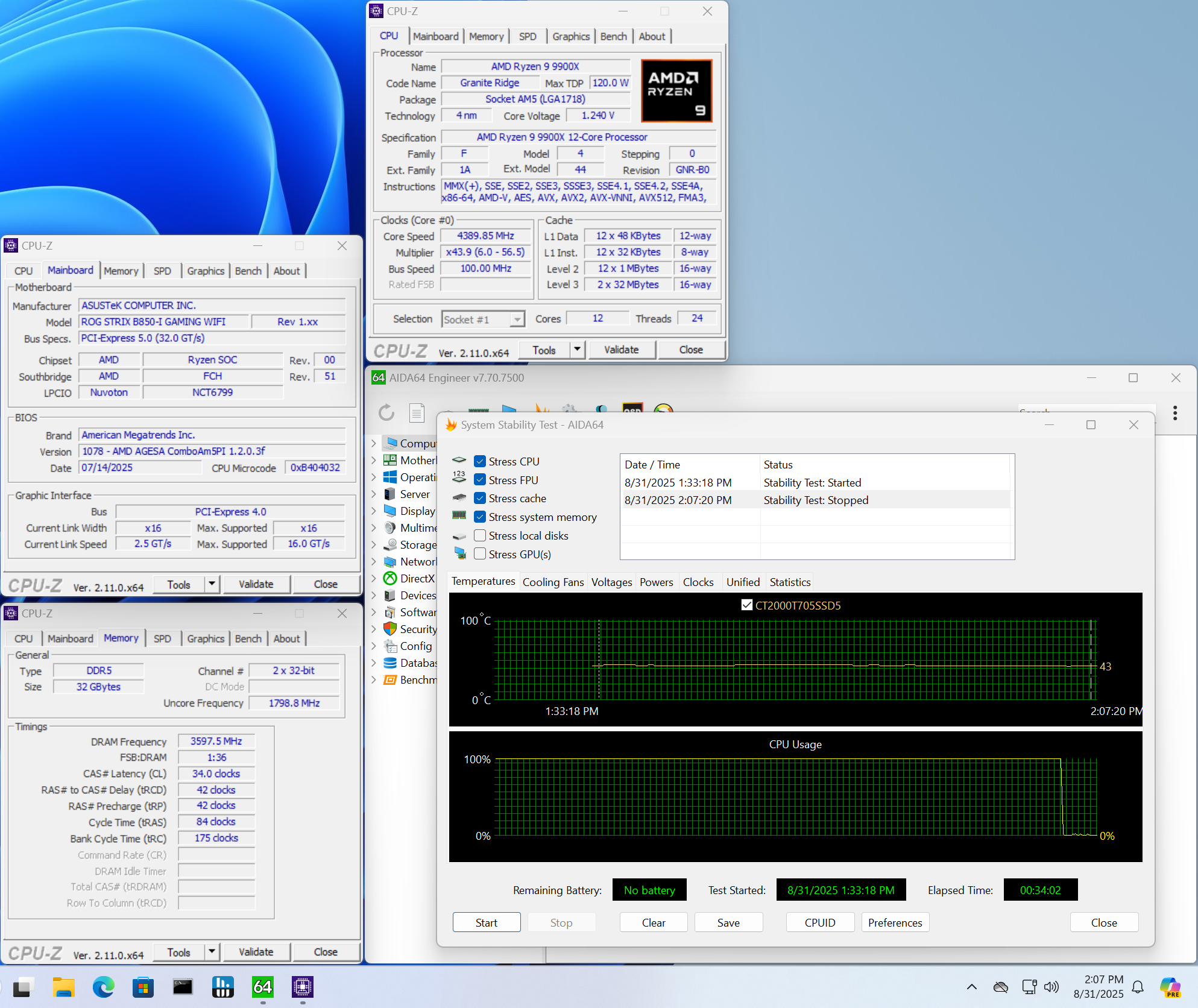
Memory testing went without any significant surprises. The ROG Strix B850-I did boot with our Klevv DDR5-8000 kit; however, it wouldn’t pass the stress test. So we tossed in our trusty Teamgroup DDR5-7200 kit, fired it up, and the board passed testing without any tweaks. It’s AMD, so you’re mostly want to stick to the the 6000-6400 MT/s range for gaming.
If manual tweaking of your processor isn’t your thing, Asus’ AI Overclocking intelligently predicts the optimal configuration after analyzing the CPU and cooling quality, pushing your system to its limits.
Power Consumption / VRM Temperatures
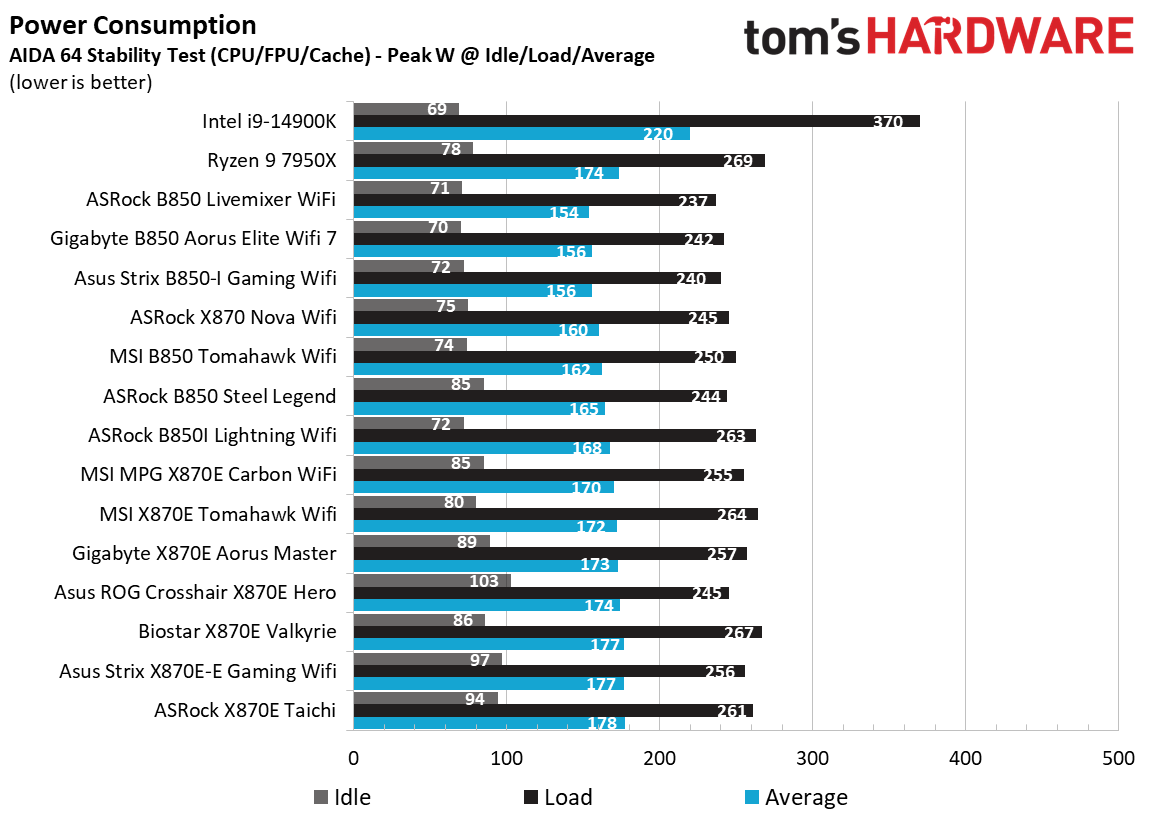
We used AIDA64’s System Stability Test with Stress CPU, FPU, Cache, and Memory enabled for power testing, using the peak power consumption value from the processor. The wattage reading is from the wall via a Kill-A-Watt meter to capture the entire PC (minus the monitor). The only variable that changes is the motherboard; all other parts remain the same. Please note that we have transitioned to using only the stock power use/VRM temperature charts, as this section aims to ensure the power delivery can handle flagship-class processors.
The power consumption of the Ryzen 9 9990X is relatively low compared to the 7950X used for X670/X670E. In the past, high-end boards peaked at nearly 300W, but current systems now reach a maximum of 250- 270W during CPU stress tests (gaming with the Nvidia RTX 4080 versus the RTX 3070 is a different matter). That said, the ROG Strix B850-I Gaming peaked at 240W under load, with the CPU consuming around 150W. The idle power consumption for this board was among the better results at 72W. Overall, it’s a pretty efficient board.
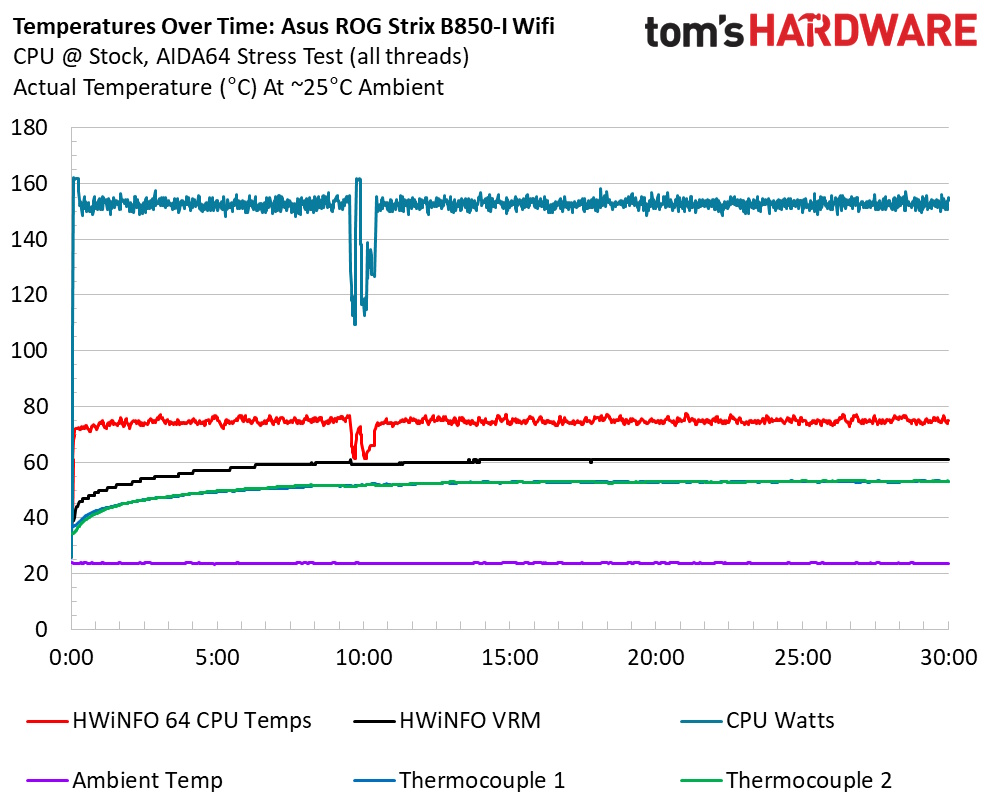
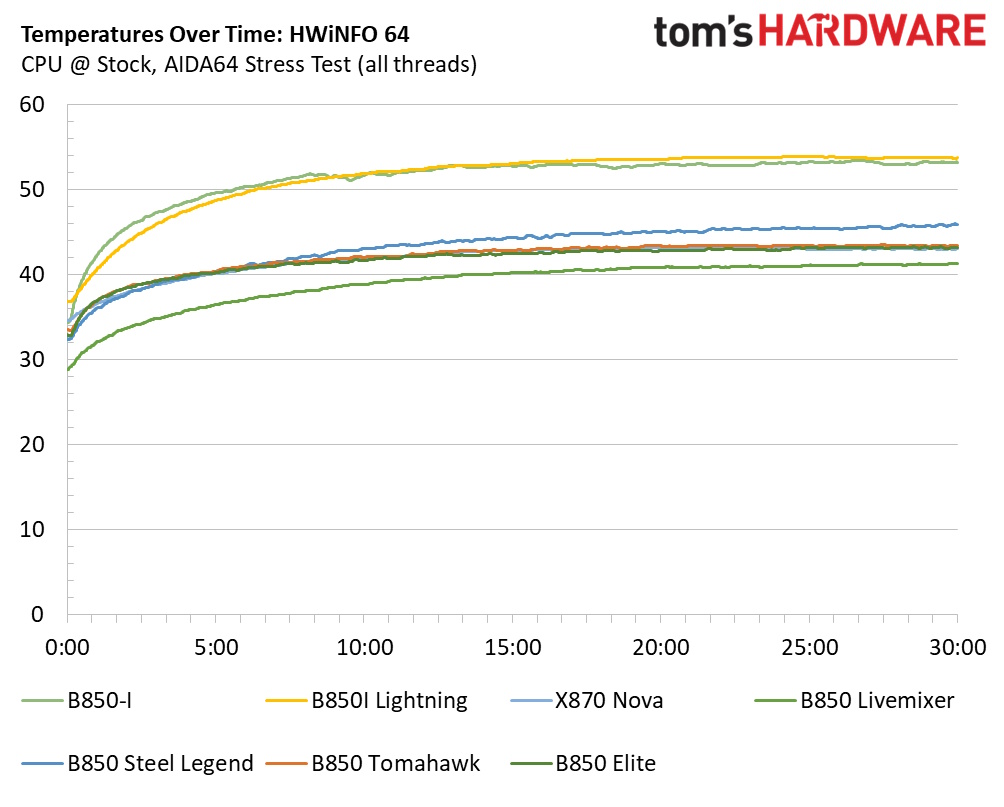
The Asus Mini-ITX board exhibited the warmest VRM temperatures in our tests, reaching approximately 54 degrees Celsius on our sensors and over 60 degrees Celsius according to Hwinfo and its internal sensor. Despite this, the temperatures remain within specifications. In the end, we have no concerns about the board’s power delivery, even when paired with a CPU like the Ryzen 9 9950X. Optimal airflow is recommended to maintain cooler temperatures.
Bottom Line
The Asus ROG Strix B850-I Gaming proved to be a capable Mini-ITX board. While its hardware, apart from the dual PCIe 5.0 x4 sockets, doesn't significantly differentiate it from other B850-based Mini-ITX boards, its software suite, AI and DIY features, and overall performance set it apart. However, its limited USB connectivity might be a drawback, pushing some buyers to consider the X870-I Gaming, which comes at a substantial premium ($489.99) for minimal additional benefit.
Among B850 Mini-ITX SKUs, the ROG Strix B850-I Gaming is the most expensive. In contrast, the ASRock B850I Lighting Wifi is more budget-friendly ($259.99), with the MSI MPG B850I Edge Ti Wifi ($284.99) and Gigabyte B850I Aorus Pro ($301.99) falling in the mid-range. The decision of which to choose largely hinges on whether you need two PCIe 5.0 x4 sockets for NVMe and intend to use the other features Asus offers. But if M.2 bandwidth isn't a priority, other, less expensive options are hard to pass up. Nevertheless, the Asus ROG Strix B850-I Gaming is a strong contender and, if within budget, is arguably the most well-rounded Mini-ITX solution.
MORE: Best Motherboards
MORE: How To Choose A Motherboard
MORE: All Motherboard Content
Current page: Benchmark Results and Final Analysis
Prev Page Firmware, Software and Test System
Joe Shields is a staff writer at Tom’s Hardware. He reviews motherboards and PC components.
